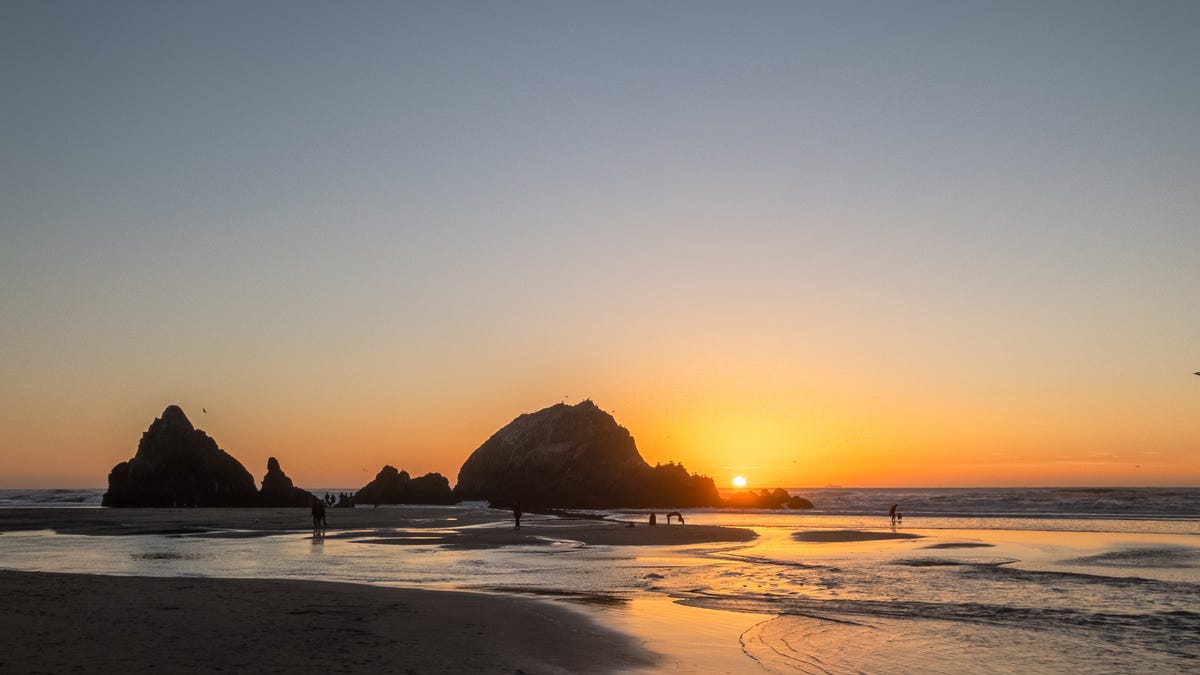Newest Lightroom designed to help snap those tricky photos
Adobe tackles tricky lighting with its newest phone software for photography. And it goes beyond standard JPEG images.
Camera apps are getting steadily more impressive, but Adobe Systems thinks its mobile software can outpace them for serious photographers.
A new version of its Lightroom software for phones and tablets can combine three shots into a single image that captures both bright highlights and dark shadows. The technique, called high-dynamic range (HDR) photography, is a standard option on iPhones and rival devices powered by Google's Android software. But Adobe's approach offers more flexibility and potentially higher image quality than JPEG photos taken with the built-in camera app.
"The JPEG is really good," said Josh Haftel, leader of Adobe's Lightroom mobile work. "This is one stop better."
HDR images are useful for situations such as sunsets with bright skies and dim foregrounds or architecture shots with a dark interior and sunny outdoors visible through the window. Those conditions challenge even high-end cameras , and mobile phone image sensors can really struggle.
Phone cameras still can't match dedicated higher-end cameras such as mirrorless models and SLRs. But with better image sensors and processing technology, phones get closer each year and make it easier to leave the regular camera at home.
In my testing with an iPhone 7 Plus , I found the HDR feature generally delivered on its promise, keeping bright skies from blowing out into a wash of white and keeping garish orange artifacts at bay for sunlit faces. However, with fast-moving subjects, there can be problems unifying the different frames -- a common HDR affliction -- and darker areas still can suffer the colored speckles characteristics of digital photography noise. It's a step forward, but still not up to the power of an SLR and dedicated HDR software.
Subhed: shooting raw
If you're serious enough about photography that you haul around a dedicated camera, there's a good chance you shoot photos in raw image formats that offer higher quality than typical JPEGs. Adobe's Lightroom mobile software employs a raw format called DNG, short for Digital Negative. That sets it apart from conventional phone HDR modes that offer JPEG images.
The below comparison shows four unedited images taken with an iPhone 7 Plus. Clockwise from upper left are shots taken with Lightroom's HDR mode; Apple's standard JPEG mode; Lightroom's standard raw mode; and Apple's HDR JPEG mode. Note how the HDR modes can show the calla lily blossom's structure despite the bright white.
Raw photos store the original data captured by a camera's image sensor before it's converted into a JPEG. While JPEGs are more convenient for sharing, raw files are more flexible for editing and can offer a better dynamic range. They also leave editing choices such as sharpening, color balance and noise reduction up to the photographer instead of permanently baking those decisions into a JPEG.
Lightroom for mobile already could capture DNG images, but now it can capture DNG HDR, too -- if you have the right phone. Combining the three initial raw images into one DNG HDR takes a lot of processing power, so only cameras with fast processors and not too many pixels are up to the task, Haftel said.
Limited availability
For Android, DNG HDR works on Google's Pixel and Pixel XL and on Samsung's Galaxy S7 and S7 Edge. On Apple's iOS devices, it works on the iPhone 6S and 6S Plus , iPhone 7 and 7 Plus, iPhone SE and 9.7-inch iPad Pro . Adobe expects to gradually expand to more devices.
Even with these modern devices, HDR DNG makes you wait. When you use the Lightroom camera in HDR mode, the screen flashes as it takes a quick video sweeping from dark to light to figure out what exposure levels to use for its three shots. You can take as many shots as you want, but you have to leave the camera module before the app will start generating the HDR images in the background. Each takes about 10 seconds to produce.
Deghosting: These photos show how Lightroom mobile builds HDR images from three frames.
Adobe's software aligns the three images, tries compensates for "ghosting" problems that can crop up when elements of the scene are in motion, and sets tonal values to try to build a natural look. So no, it's not that saturated, grungy, surreal HDR style that was popular a few years back. The processing takes about 10 seconds per image, but unfortunately happens only after you've closed the app's camera mode.
No instant gratification
People taking a quick snapshot probably won't bother, but Adobe is betting creative types don't need instant gratification.
"Our focus is on people who want better control or better quality," Haftel said. "We want to position this as a serious capture device."
The new versions bring other changes, too. On iOS, there's a new ability to export a DNG or JPEG photo to the iOS camera roll. A Force Touch-sensitive widget can be used to launch the camera faster. And for those paying for Adobe's Creative Cloud subscription, synchronization with Lightroom's PC-based photo catalogs also is faster and more reliable, Adobe said.
The Android version of Lightroom catches up to iOS with the ability to apply changes over radial and linear gradients -- though that feature also is only for Creative Cloud subscribers.


